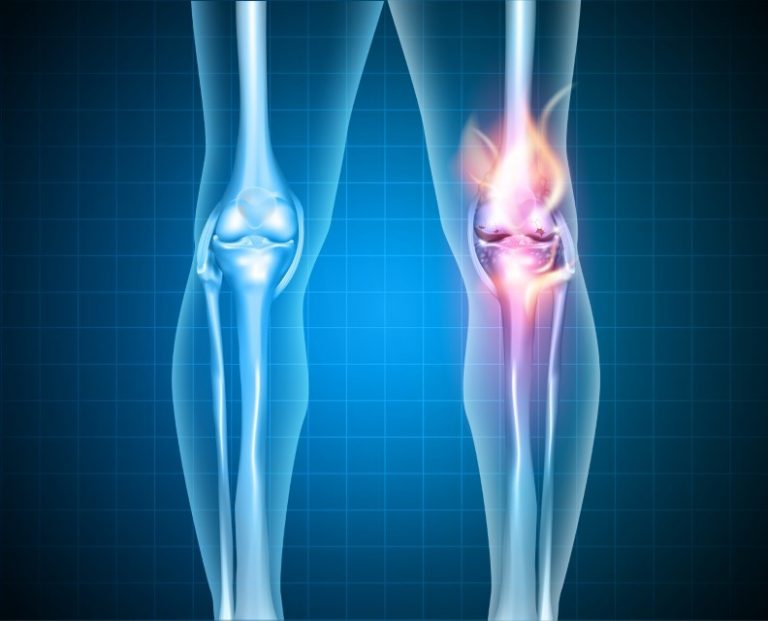Suzie Bostock explains how motorcyclists can prevent and reduce the symptoms of osteoarthritis.
Osteoarthritis is the most common type of arthritis in the UK, with approximately one in five people over the age of 45 have received some sort of treatment specifically for osteoarthritis in the knee. The condition is not an inevitable part of aging and things can be done to help reduce the likelihood of getting it or managing the condition better.
Unfortunately, many motorcyclists, particularly those that ride off-road, have sustained some kind of knee injury in the past, which is one of the factors that leaves you much more susceptible to knee osteoarthritis, as does being overweight. After sustaining knee injuries, many people simply go back to their normal activities as soon as the pain disappears. The rehab goes by the wayside, which is a big mistake.
Whether you have osteoarthritis or not, specific lower limb muscle strengthening built into an ongoing exercise regime can be a really good plan to give those knees the best chance in the future and keep you comfortable on your bike for longer. The other thing to consider is knee braces, especially for those low or non-impact injuries that cause major ligament injuries and could be avoided if braces were used.
I have put together a small exercise plan to get you started that can be done anywhere, not just in a gym. This is for people who do not have a recent knee injury or have well recovered from a previous one. The exercise should not cause pain, and if you have had a recent injury, I’d strongly advise a visit to a physiotherapist. Ideally aim for 3-4 sets of each exercise with a two-minute rest in between, once every other day.
For those exercises that require an exercise band, these can be purchased cheaply on the internet, and better yet, you can get a variety of tensions so you can progress yourself as exercises get easier. If the muscles aren’t being challenged, you won’t get stronger. Remember, exercise bands will break with the slightest nick in them or from anything pointy, so use soft shoes without any dirt on them to do the band exercises.
Offset Bridge
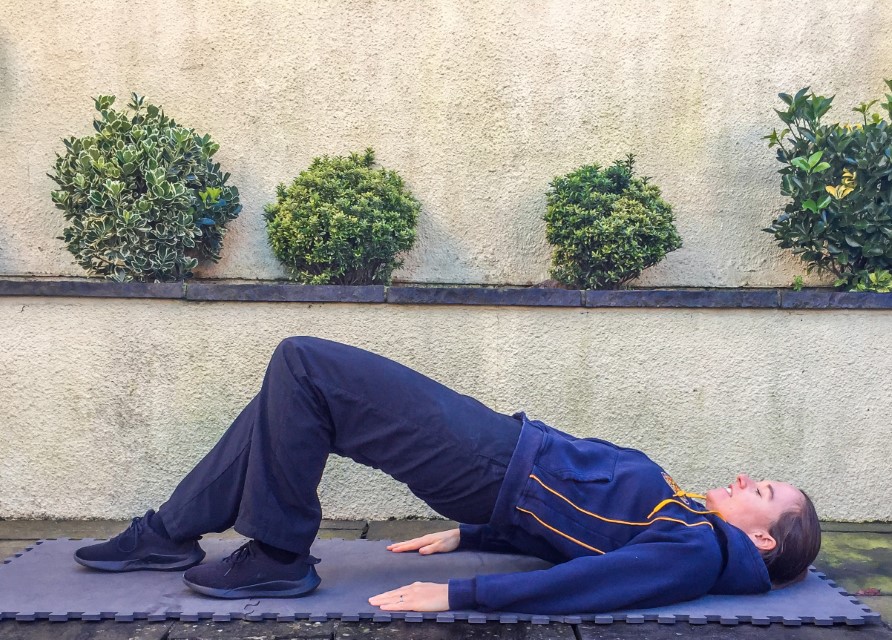
Lie on your back with your knees bent up. Place one foot closer to your bottom and the other further away. Lift your bottom up in the air as far as comfortable and hold for 3-5 seconds. Slowly lower. Do this 8-12 times and then swap the position of your feet and repeat.
Sit-to-stand
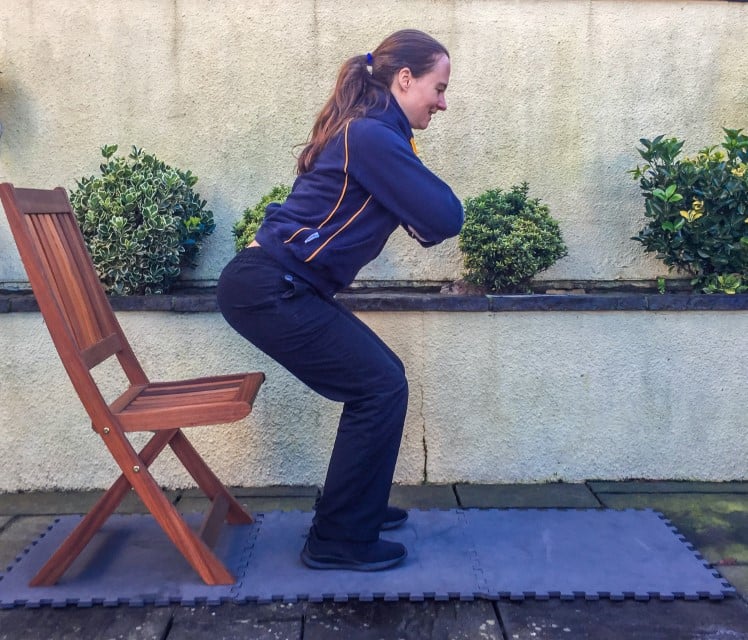
Find a stable surface that you can stand up from without having to use your hands, the lower the better. Stand up from a seated position slowly, driving through your heels then slowly sit down again. If you can’t control the movement slowly through the whole movement, find a slightly higher surface. If it is too easy, instead of allowing yourself to sit, just touch your bottom and then slowly stand again. Repeat as many times as you can manage without losing the control.
Lateral band walk
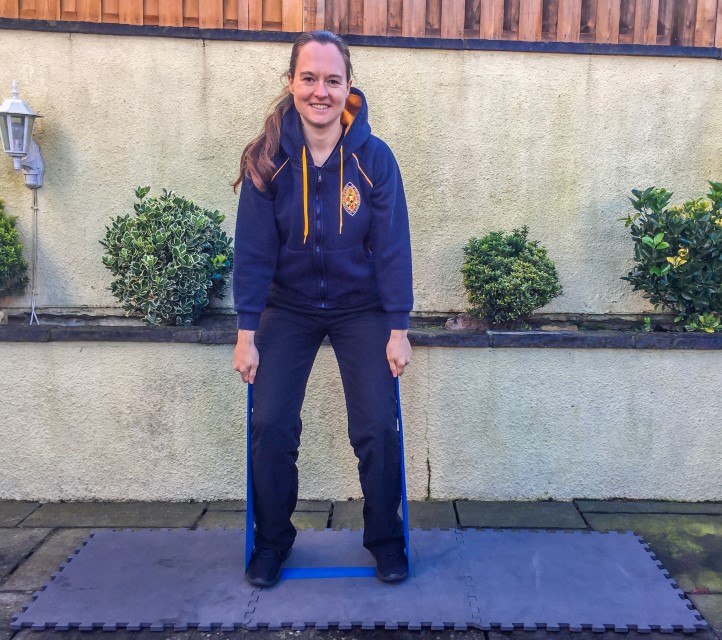
Get a long piece of exercise band. Place the middle portion under your feet, with your feet together and then take up the tension of the band with your hands. Let your knees bend a little and slowly walk sideways as far as possible and then go back the way you came, always keeping the movement slow and controlled. Keep this up until the muscles get tired.
Side-lying leg Lift
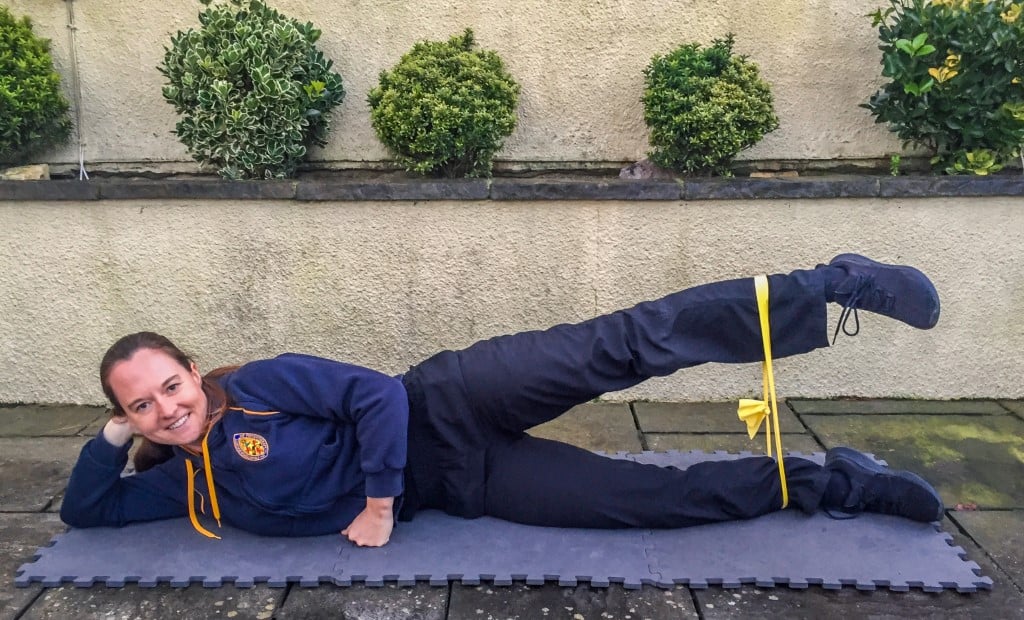
Lie on your side with the top hip rolled slightly forwards. Slowly lift your top leg directly upwards and slowly lower. Repeat until the muscle gets tired. If this is far too easy (you can do 20 or more repetitions without an issue), place a band around your legs to add some resistance or use an ankle weight. Do this on both legs.
Prone leg lift
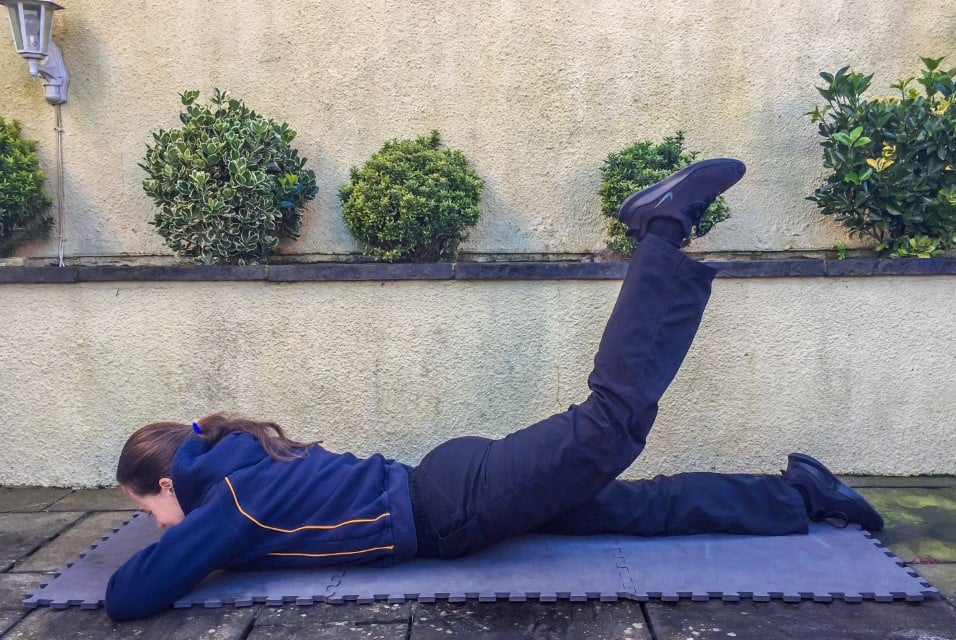
Lie on your tummy. Bend one knee up to 90 degrees and then lift your thigh off the floor, squeezing your bottom muscles. Slowly lower. Repeat 8-12 times on one side and then repeat on the other side.
Exercise band hamstring curl
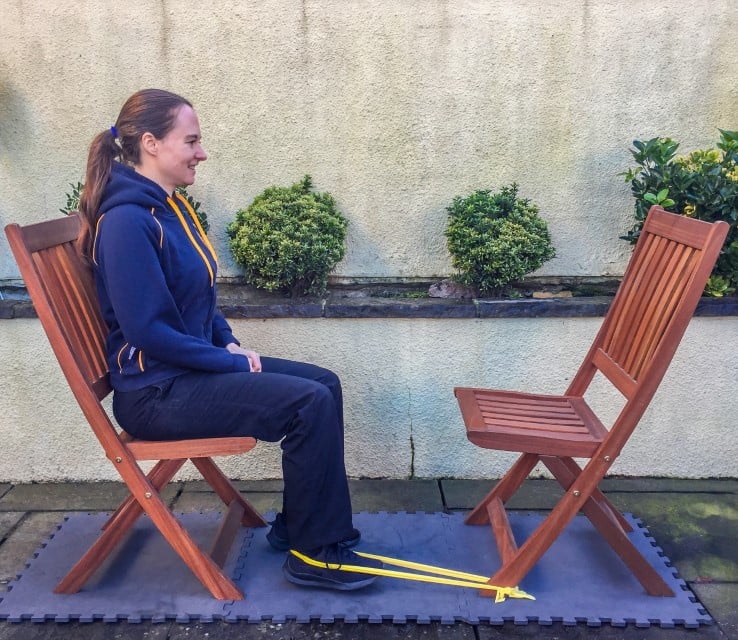
Sit on a chair and tie an exercise band around something immobile in front of you to create a loop. Put your foot in the loop and make sure the band has no slack. Slowly bend your knee pulling the band back as far as you can. Hold for 2-3 seconds and slowly return to the start position. Repeat 8-12 repetitions. Repeat on the other leg.
Exercise band quads exercise
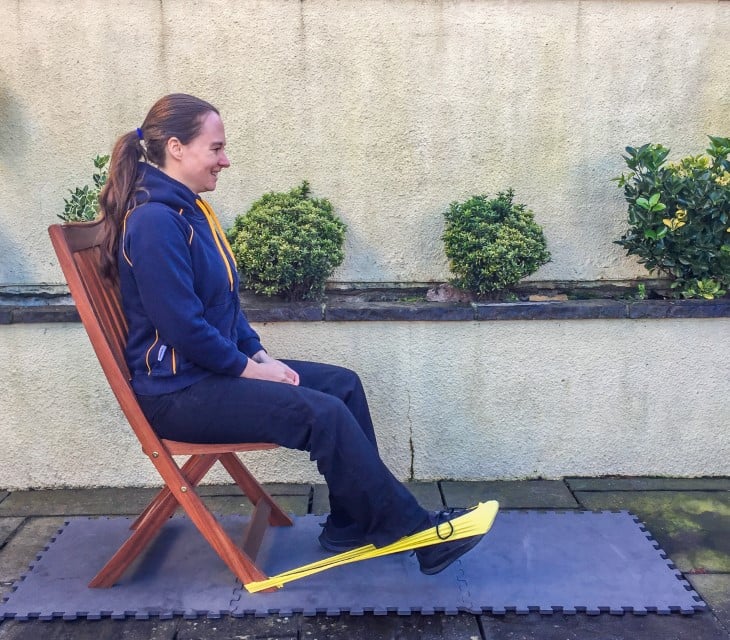
Sit on a chair and loop an exercise band around the chair leg or something immobile behind the chair (depending on band length). Place your foot in the loop so that there’s no slack. Slowly straighten your knee pushing the band forwards (watch it doesn’t ping off your foot). Hold for 2-3 seconds and then slowly return to the start position. Repeat 8-12 times. Repeat on the other leg.
Heel raise
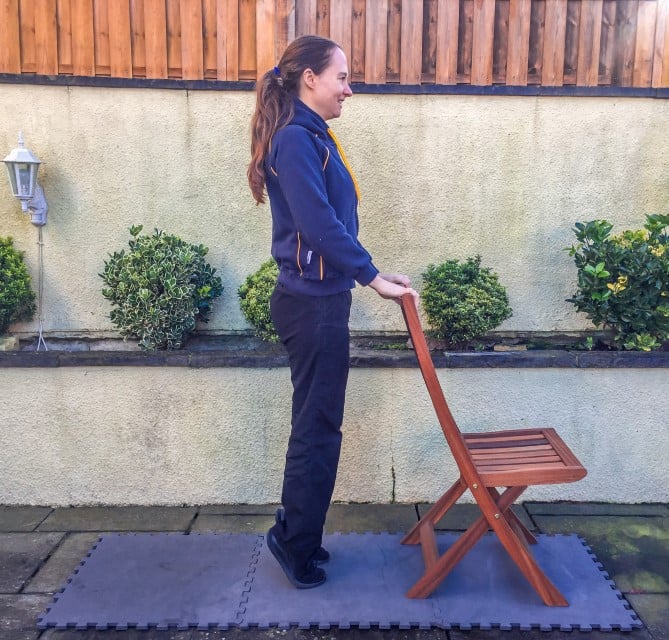
Stand up. Raise up on your toes and slowly lower. Repeat for 10-15 repetitions. If this is too easy, just do it on one leg at a time. If this is still too easy, use a backpack with some weight in it (be careful if you have a back, neck or shoulder problem). If you have any questions please contact Suzie via email at physio.suzie@gmail.com

